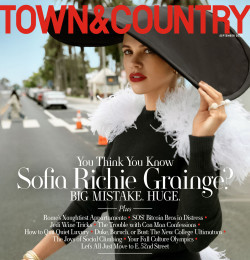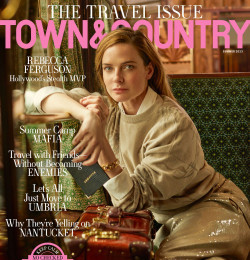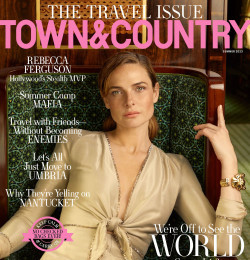Town & Country


Town & Country, formerly the Home Journal and The National Press, is a monthly American lifestyle magazine. It is the oldest continually published general interest magazine in the United States.
Early history
It was founded by poet and essayist Nathaniel Parker Willis and New York Evening Mirror newspaper editor George Pope Morris, as The National Press in 1846. Eight months later, it was renamed The Home Journal. After 1901, the magazine title became "Town & Country" and it has retained that name ever since.
Throughout most of the 19th century, this weekly magazine featured poetry, essays, and fiction. As more influential people began reading it, the magazine began to include society news and gossip in its pages. After 1901, the magazine continued to chronicle the social events and leisure activities of the North American landed aristocracy such as debutante or cotillion balls, and also reported on the subsequent "advantageous marriages" that came from people meeting at such social engagements.
The magazine's earlier readership initially consisted of members of the Establishment. This includes older wealthy families of New York, Boston Brahmins or those people in other parts of the United States whose surnames may have appeared in the Social Register.
Willis owned and edited the magazine from 1846 until his death in 1867.
Modern history
After Willis's death, the magazine went through several owners and editors until William Randolph Hearst acquired ownership in 1925. The first editor under Hearst ownership was Harry Bull. He edited the magazine from 1925 through 1949. Henry B. Sell became Bull's successor.
The magazine is still owned and published by the Hearst Corporation.
Today, the magazine is published monthly, and its readership is composed of mainly younger socialites, café society, and middle class professionals.
Most of the advertising copy in the magazine is for luxury goods and services. The feature articles and photography focus primarily on fashion, arts, culture, interior design, travel, weddings, parties, gala events and other interests and concerns of the upper class.
In May 1993, Pamela Fiori became the first woman editor-in-chief of Town & Country magazine. During her tenure, Fiori has been credited with increasing circulation in several ways, including making the magazine more fashion forward and, in recent years, making philanthropy more of a priority for the magazine.
Fiori also has pushed for more diversity in the magazine's coverage. In an effort to play down the magazine's perceived snobbish and elitist WASP, or preppy image, more celebrities have been showing up on the magazine covers, and there has been an increase in the number of articles showcasing the events and weddings of socially prominent persons of African-American descent, as well as the social activities of people of other ethnicities.
Spin-off
In September 2003, a spin-off magazine entitled Town & Country Travel appeared. It is published quarterly. In September 2007, Town & Country Travel launched a travel website, townandcountrytravelmag.com; its staff travel blog can be found here. There is a special edition of the magazine focusing on wedding planning. In the past decade, several etiquette, wedding and lifestyle guidebooks have also published by the magazine. Among the most recent books published by the magazine is "Modern Manners: The Thinking Person's Guide to Social Graces," released in 2005 and edited by Town & Country senior editor Thomas Farley.





